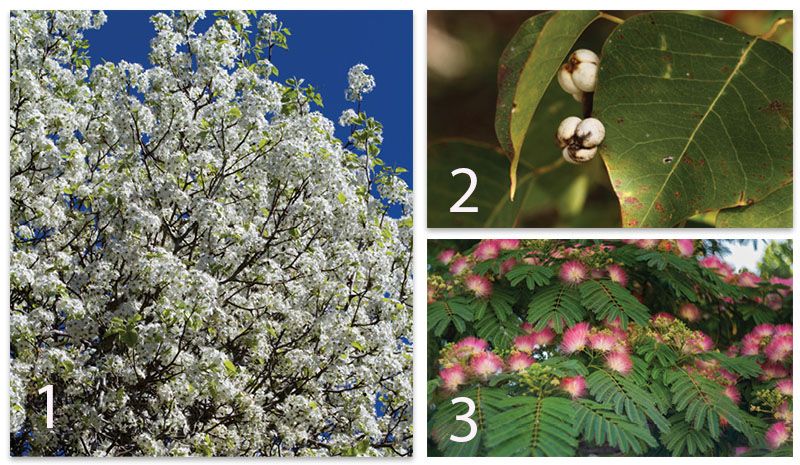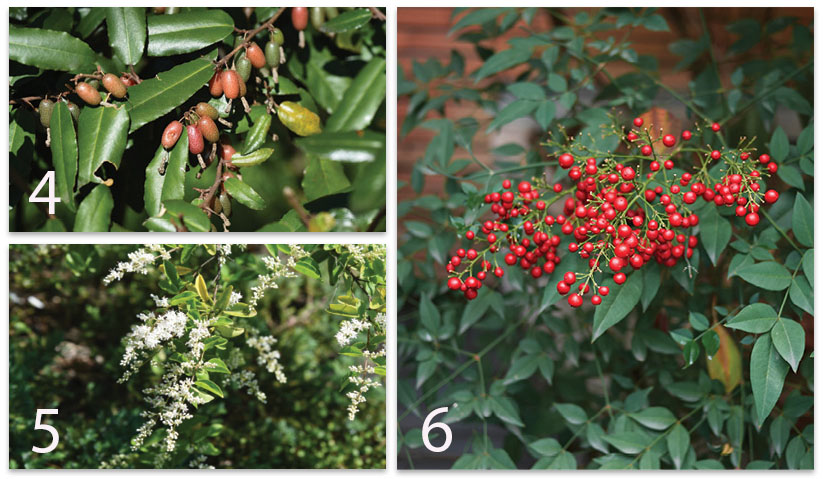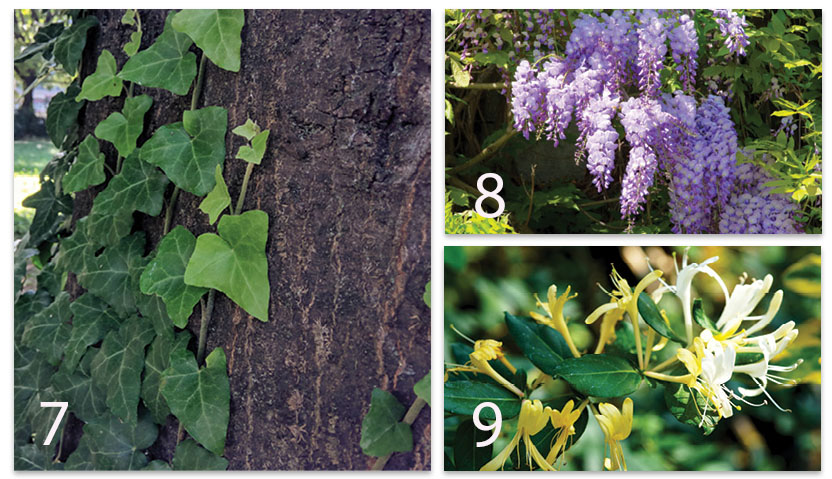You might be surprised that some of your favorites are on the list

(Clockwise from left) Callery pear tree (Pyrus calleryana); Chinese tallow tree (Triadica sebifera); Mimosa tree (Albizia julibrissin)
Showy blooms, enticing scents, and decorative berries: invasive species can be a beguiling bunch. It makes sense, as “many were planted for their ornamental qualities at one time or another,” notes Christopher Burtt, a Clemson University Cooperative Extension agent. These plants were imported into an environment in which they didn’t evolve—one where they are able to “establish and reproduce quickly without cultivation,” he explains. Powerful enough to take over large areas, they muscle out native species and upset local ecosystems.
While invasives do their worst damage in wild places, like forests and wetlands, “it’s important to know that everything you grow in your personal landscape contributes to the larger ecosystem,” Burtt says. Here, he points to nine of the top home-garden offenders. Find out which ones you may be harboring (“Exotic Invasive Plant Species of South Carolina” has more info at se-eppc.org/southcarolina), and kick them out posthaste.
TREES
1) Callery pear (Pyrus calleryana): You may know this hybrid—a gorgeous cloud of white in early spring—by the cultivar name ‘Bradford’. Intended to be sterile, it’s now reproducing and “could really be a problem in the next 10 years because it’s been so over-planted,” says Burtt. “It’s a host for fire blight, a disease that affects plants in the rose family, including peaches, an important South Carolina crop.”
2) Chinese tallow (Triadica sebifera): Chances are, you’ve plucked seedlings from your landscape even if there’s no “popcorn tree” in sight. Producing berries that locals traditionally use in holiday decor, it easily reseeds and regenerates quickly when cut down.
3) Mimosa (Albizia julibrissin): We love 18th-century botanist André Michaux for bringing camellias to America via his Charleston gardens, but the mimosa tree? Not so much. It drops pods filled with seeds that’ll likely take root in all your neighbors’ yards.

SHRUBS
4) Thorny olive (Elaeagnus pungens): With silvery green leaves, this aggressive grower is already established in many green spaces and (beware) still sold in some garden centers. Wildlife helps spread its red fruit, while vine-like runners climb high into trees.
5) Chinese privet (Ligustrum sinense): Before you panic, note that your “ligustrum” may be well-mannered; it’s the sinense species that produces prolific amounts of purple fruit (aka future weeds) and colonizes through root sprouts to form dense thickets.
6) Nandina (Nandina domestica): This small shrub “may choke out other plants within the same garden bed,” notes Burtt, “and its berries have been known to cause bird deaths.” Luckily, fruitless cultivars are available; find a list at hgic.clemson.edu.

VINES
7) English ivy (Hedera helix): Ripping out this attractive evergreen probably sounds like an unappealing proposition, but here’s extra incentive: it joins another ground cover with invasive qualities, monkey grass, in sheltering mosquitoes.
8) Chinese wisteria (Wisteria sinensis): This species of wisteria blooms more prolifically and grows more vigorously than its native cousin, Wisteria frutescens, colonizing by runner sprouts as well as vines that can scale and strangle trees.
9) Japanese honeysuckle (Lonicera japonica): You may have sweet childhood memories of drinking nectar from its blooms, but this honeysuckle is a bully, engulfing any plant that gets in its way. Try replacing it with the native coral honeysuckle, “which is even better at attracting hummingbirds,” says Burtt.
Fight Back!
Get the rundown on removing invasives—and fending off future trespassers
Learn the best steps for removal. Read about the plant you’re targeting at invasivespeciesinfo.gov, or contact your county Cooperative Extension office. While you can easily pluck out seedlings (like the mini mimosa tree shown above), established plants require digging up, cutting down, and/or applications of herbicide. Eradicate as many roots and runners as possible.
Take out plants when seeds are not present to avoid further spread. If you must disturb an invader bearing seeds, throw it in the trash, not the compost.
Keep at it. “Especially with vines, be persistent; you may not get it all the first time or even the 10th,” says Burtt. Monitor for returning sprouts and seedlings, and deal with them right away.
Prevent new infestations. Keeping garden beds covered in mulch—one to four inches, depending on the material—is vital, Burtt notes. You can further deter intruders by filling in noninvasive plantings. Search the Carolina Yards Plant Database (clemson.edu/extension/carolinayards) to find excellent options for your setting.
Tip:
Subscribe to Charleston Horticultural Society’s YouTube channel, where accomplished green thumbs—including Alejandro González (below)—give tours of their inspiring Lowcountry green spaces.